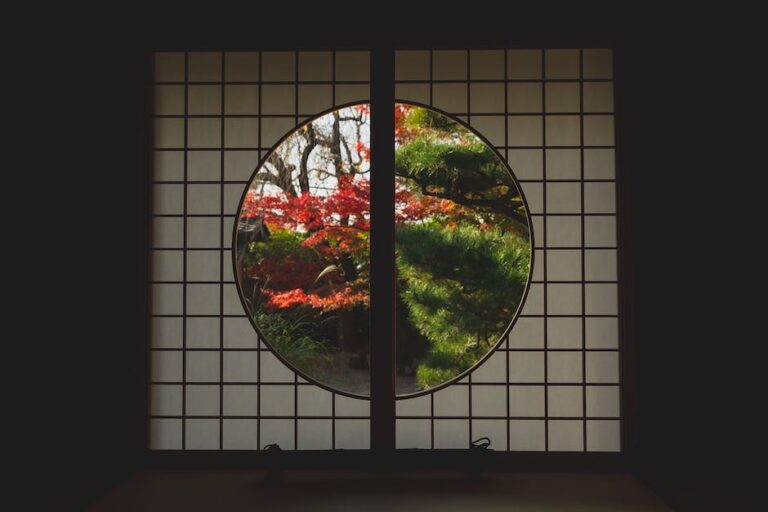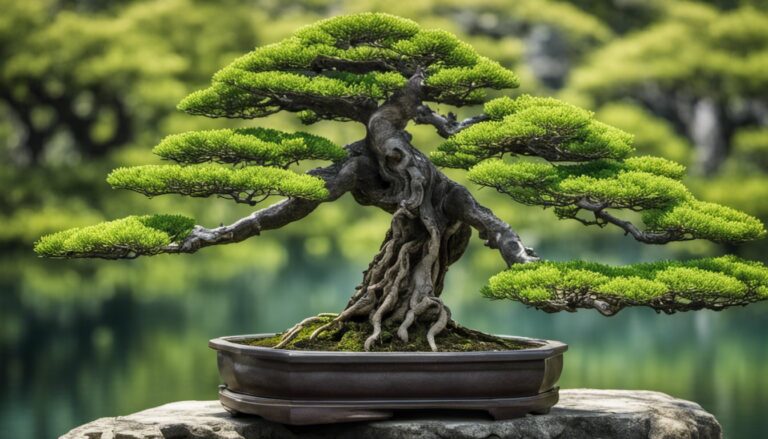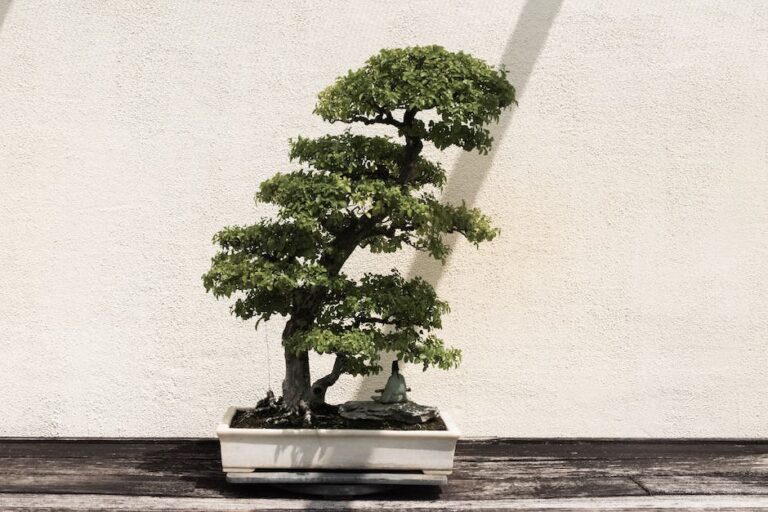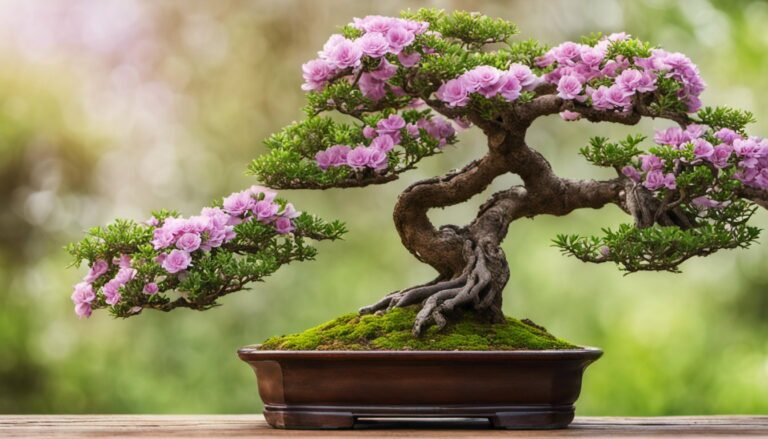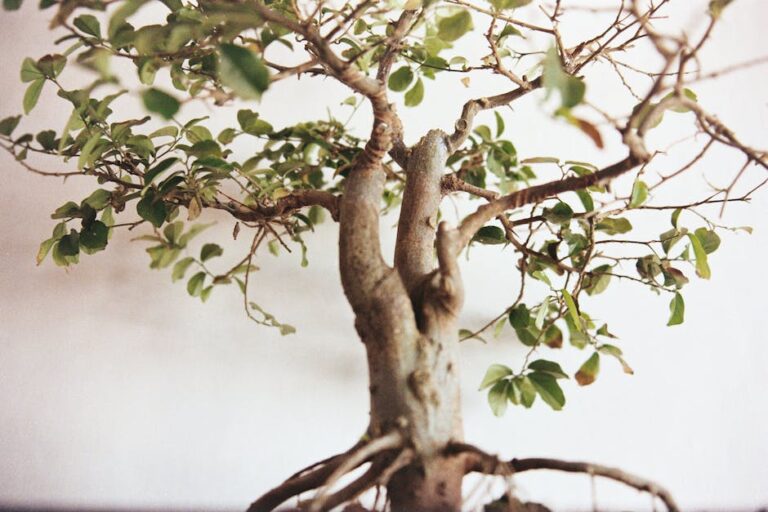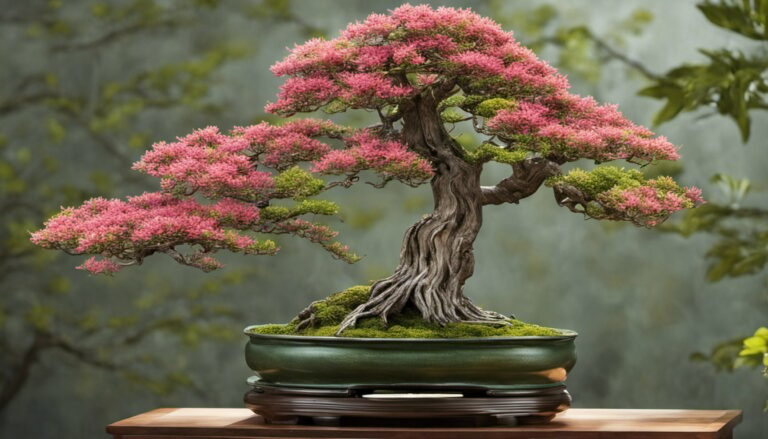How Long Does It Take To Make Maple Bonsai Tree
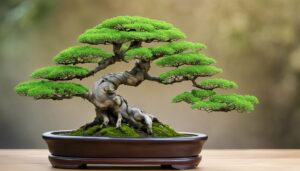 Did you know that it takes an average of six to eight years to create a fully mature maple bonsai tree? That’s right, the art of crafting a maple bonsai requires time, patience, and precision.
Did you know that it takes an average of six to eight years to create a fully mature maple bonsai tree? That’s right, the art of crafting a maple bonsai requires time, patience, and precision.
In this article, we will explore the fascinating process of making a maple bonsai tree from seedling to tree, as well as the training techniques and factors that affect its growth rate.
Whether you’re a seasoned bonsai enthusiast or a beginner, this informative and educational guide will provide you with the tips and tricks to achieve maple bonsai perfection.
Key Takeaways
- Maple bonsai crafting requires time, patience, and precision.
- Growing a maple bonsai from a seedling to a tree requires patience and consistent care.
- Maple bonsai training techniques include pruning, shaping the branches, and wiring.
- Factors such as watering, sunlight, and fertilization affect the growth rate of maple bonsai.
The Art of Maple Bonsai Crafting
Crafting a maple bonsai tree takes time and patience. Maple bonsai care requires specific conditions to ensure their growth and development.
To begin, you need a healthy maple tree specimen with a strong trunk and suitable branches. Maple bonsai styling involves careful pruning and wiring to shape the tree. Pruning should be done during the dormant season to encourage new growth and maintain the desired shape. Wiring helps to train the branches into the desired position.
It is important to regularly water and fertilize the maple bonsai to provide the necessary nutrients for its growth. Position the tree in a location with adequate sunlight and temperature regulation. Regularly monitor the tree’s health and make adjustments as needed.
With proper care and attention, your maple bonsai tree will thrive and become a beautiful addition to your collection.
Nurturing Maple Bonsai From Seedling to Tree
Growing a maple bonsai from a seedling requires patience and consistent care throughout the nurturing process. Maple bonsai trees, known for their vibrant foliage and delicate branches, can be a captivating addition to any garden or indoor space. To ensure their healthy growth, it is crucial to understand the specific requirements of these miniature trees.
When it comes to pruning techniques, it is important to strike a balance between maintaining the desired shape and promoting new growth. Regular pruning helps enhance the tree’s overall structure and encourages the development of smaller leaves.
As for soil requirements, maple bonsai trees thrive in well-drained soil that is rich in organic matter. A mixture of akadama, pumice, and lava rock is commonly used to provide adequate water retention and aeration.
Patience and Precision: Maple Bonsai Training Techniques
Practicing patience and precision in training techniques is key to shaping a captivating maple bonsai. Bonsai tree pruning and maple bonsai care require careful attention to detail.
To create a stunning maple bonsai, follow these steps:
- Choose a healthy maple sapling with a strong trunk and well-developed branches.
- Prune the roots to promote a shallow, compact root system.
- Select and shape the main branches, cutting back to encourage a desirable structure.
- Wire the branches to guide their growth and create an aesthetically pleasing shape.
- Regularly monitor and adjust the wiring to prevent damage and maintain the desired form.
Remember, maple bonsai care is crucial for the tree’s health. Provide adequate sunlight, water, and nutrition, and protect it from extreme temperatures.
With patience and precision, you can cultivate a captivating maple bonsai that will bring beauty and tranquility to your space.
Factors Affecting the Growth Rate of Maple Bonsai
To optimize the growth rate of your maple bonsai, consider factors such as proper watering, adequate sunlight, and the use of appropriate fertilizers. These factors play a crucial role in determining the overall health and development of your bonsai tree.
Proper watering: Provide your maple bonsai with sufficient water, ensuring that the soil is evenly moist but not waterlogged.
Adequate sunlight: Place your bonsai in a location where it can receive at least 6 hours of direct sunlight each day. This will promote strong growth and vibrant foliage.
Use of appropriate fertilizers: Choose a balanced fertilizer specifically formulated for bonsai trees, and apply it according to the instructions provided. This will provide essential nutrients for healthy growth.
Achieving Maple Bonsai Perfection: Tips and Tricks
Achieving the perfect maple bonsai requires careful attention to factors like sunlight, watering, and fertilization. Maple bonsai trees are delicate and require specific care to thrive. When it comes to sunlight, they prefer bright, indirect light for at least 6 hours a day. Watering should be done when the soil feels slightly dry, avoiding both underwatering and overwatering. Fertilization is crucial for providing the necessary nutrients. It is recommended to use a balanced fertilizer during the growing season. Additionally, choosing the right maple variety is important for bonsai tree care. Some popular choices include the Japanese maple (Acer palmatum) and the Trident maple (Acer buergerianum), known for their beautiful foliage and adaptability to bonsai cultivation. By following these guidelines, you can create and maintain a stunning maple bonsai tree.
| Factors | Sunlight | Watering | Fertilization |
|---|---|---|---|
| Care | Bright, indirect light for at least 6 hours a day | Water when soil feels slightly dry | Use a balanced fertilizer during growing season |
| Importance | Necessary for photosynthesis and growth | Prevents underwatering and overwatering | Provides essential nutrients |
| Varieties | Japanese maple (Acer palmatum) | Trident maple (Acer buergerianum) | |
| Adaptability | Well-suited for bonsai cultivation | Can withstand bonsai techniques |
Conclusion
Congratulations! You’ve made it to the end of this article about maple bonsai trees. Hopefully, you now have a better understanding of the time and effort required to create these miniature masterpieces.
So, how long does it take to make a maple bonsai tree? Well, the answer is not as simple as you might think. It can take years, even decades, to cultivate a maple bonsai tree from a seedling to a mature tree.
But fear not! With patience, precision, and a little bit of luck, you too can achieve maple bonsai perfection.
Happy bonsai crafting!


